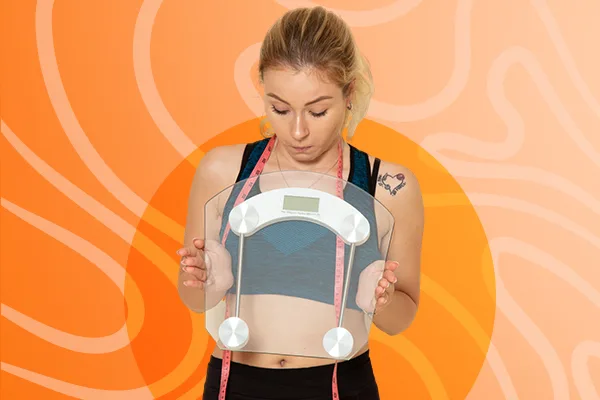What Is a Teen BMI Calculator and How Can It Help Your Teen Stay Healthy?
Wondering how the Teen BMI Calculator works? It compares a teen’s BMI to others their age and gender using growth chart percentiles to track healthy development.
- Healthy BMI: 5th–85th percentile
- Overweight: 85th–95th percentile
- Obese: 95th+ percentile
- Underweight: Below 5th percentile
Use it as a screening tool—not a diagnosis—and support results with balanced eating, physical activity, and mental well-being.
Teenagers go through a lot of physical changes during puberty, making it essential to track their growth and weight in a way that considers their unique development. One of the most common tools for assessing body weight is the Teen BMI calculator, but interpreting BMI for teens isn’t as straightforward as it is for adults.
In this article, we’ll break down what BMI is, how it applies to adolescents, and why BMI calculators for teens use percentiles rather than fixed numbers. We’ll also discuss the importance of a holistic approach to health rather than relying solely on BMI.

What is the Teen BMI Calculator and Why is it Important?
BMI is a simple calculation that uses height and weight to estimate body fat. The formula is:
For example, if a person weighs 50 kg and is 1.60 m tall, their BMI would be:
For adults, BMI categories are straightforward:
- Underweight: BMI below 18.5
- Healthy weight: BMI between 18.5 and 24.9
- Overweight: BMI between 25 and 29.9
- Obese: BMI of 30 or higher
However, for teenagers, BMI works differently because they’re still growing. A BMI of 19.5 might be completely normal for one teen but considered underweight or overweight for another, depending on age, sex, and growth patterns.
Weight
Height
Age

How the Adolescent BMI Calculator Works for Growing Teens
Unlike adults, whose BMI categories remain fixed, teenagers go through significant body changes during puberty. Their bones grow, muscle mass increases, and fat distribution changes—and these changes don’t happen at the same pace for everyone.
Because of these differences, BMI for teens is compared to a reference group of other teens of the same age and sex. This comparison is known as BMI-for-age percentiles.
Understanding BMI Percentiles with a BMI Calculator for Teens
A BMI calculator for teens uses percentiles to show how a teenager’s BMI compares to others of the same age and gender. The Centers for Disease Control and Prevention (CDC) has created standardized growth charts that categorize BMI into four groups:
- Underweight: Less than the 5th percentile
- Healthy weight: Between the 5th and 85th percentile
- Overweight: Between the 85th and 95th percentile
- Obese: 95th percentile and above
For example, a 14-year-old boy with a BMI in the 90th percentile weighs more than 90% of boys his age and is considered overweight.

What Does Your Teen’s BMI Mean?
BMI isn’t perfect, but it gives a general idea of whether a teen’s weight is within a healthy range. Let’s break down what different BMI percentiles mean:
Underweight (<5th percentile)
A teen below the 5th percentile may not be getting enough nutrients for healthy growth. Possible causes include:
- Poor diet or nutrient deficiencies
- Fast metabolism
- Underlying medical conditions
- Excessive physical activity
What to do?
If your teen’s BMI is too low, consult a doctor or nutritionist. Increasing nutrient-dense foods (like lean protein, healthy fats, and whole grains) can help.
Healthy Weight (5th – 85th percentile)
This is the ideal range where a teen is most likely to be healthy and growing properly.
What to do?
Even if your teen has a normal BMI, encourage balanced nutrition and regular exercise to maintain good health.
Overweight (85th – 95th percentile)
A BMI in this range suggests that a teen weighs more than is ideal for their height and age. Being overweight doesn’t automatically mean they are unhealthy, but it may increase their risk of:
- High blood pressure
- Pre-diabetes or insulin resistance
- Joint pain from extra weight
What to do?
Encourage healthy eating habits and regular exercise. Small changes—like reducing sugary drinks and adding daily movement—can make a big difference.
Obesity (>95th percentile)
A BMI in this range indicates a higher risk of health problems such as:
- Type 2 diabetes
- Heart disease
- Breathing issues like sleep apnea
- Mental health struggles (such as low self-esteem and body image concerns)
What to do?
Consult a healthcare provider for personalized advice. A balanced approach that includes nutritious eating, exercise, and mental health support is key.

Limitations of BMI
While BMI is widely used, it isn’t a perfect measure of health. Here’s why:
- It Doesn’t Differentiate Between Fat and Muscle
- A teen who plays sports may have a high BMI due to muscle, not fat.
- It Doesn’t Consider Puberty-Related Changes
- Some teens experience rapid growth spurts, making BMI fluctuate.
- Ethnic and Genetic Variations Exist
- BMI may not be accurate for all ethnic groups, as body composition differs.
Beyond BMI: A Holistic Approach to Teen Health
BMI is just one piece of the puzzle. The best way to support a teen’s health is to focus on overall well-being rather than just a number. Here’s how:
Encourage Healthy Eating
- A balanced diet with lean proteins, fruits, vegetables, whole grains, and healthy fats helps teens get the nutrients they need.

Promote Physical Activity
- Teens should get at least 60 minutes of moderate to intense exercise daily. Activities like swimming, basketball, or even dancing are great.
Support Mental Health
- Teens are vulnerable to self-esteem issues, so avoid body-shaming. Instead, promote body confidence and a healthy lifestyle.
Create a Healthy Home Environment
- Model healthy eating and exercise habits at home. Kids and teens learn by example!
Conclusion: BMI Calculator for Teens
BMI calculators for teens can help identify trends in weight and growth, but they aren’t the only measure of health. Focusing on balanced nutrition, regular exercise, and mental well-being is far more important than just a number on the scale.
If you’re concerned about your teen’s weight, talk to a healthcare professional for guidance tailored to their individual needs.
References
Centers for Disease Control and Prevention (CDC)-Child and Teen BMI Calculator
World Health Organization-BMI-for-age (5-19 years)
Harvard Health Publishing-Scary news about childhood obesity








